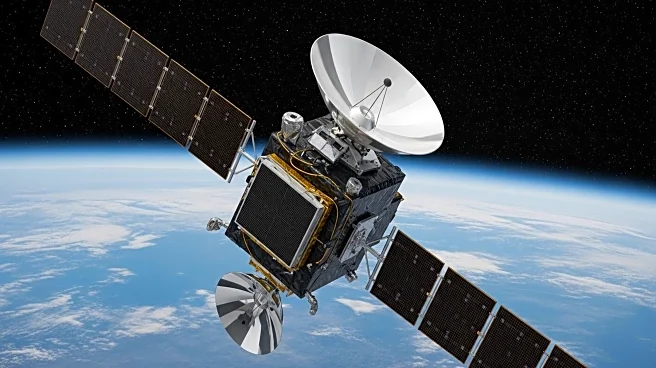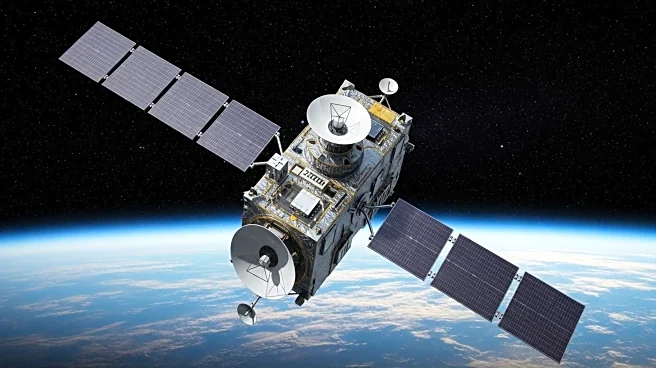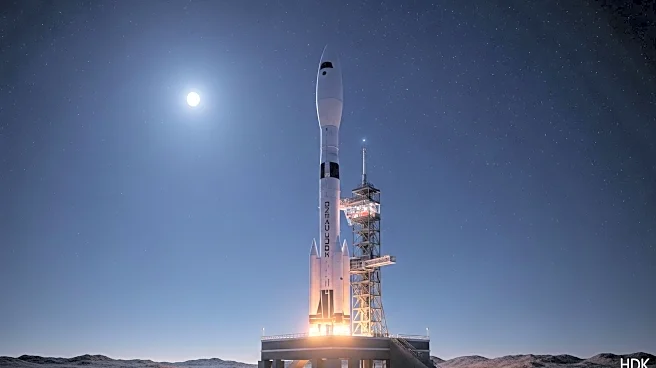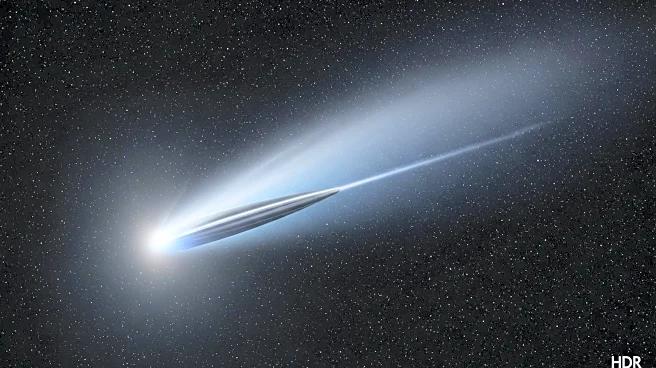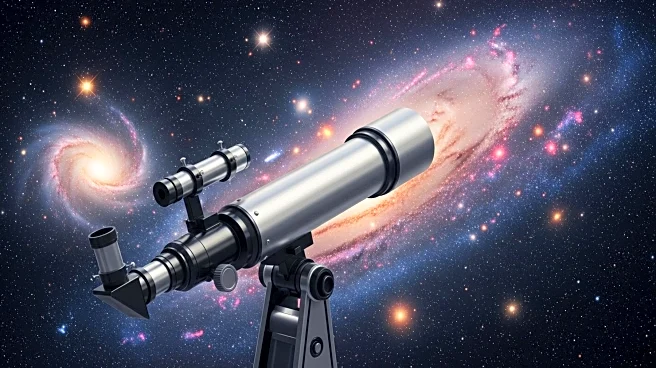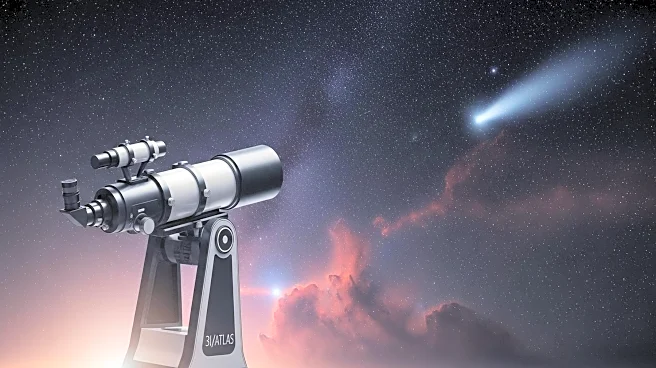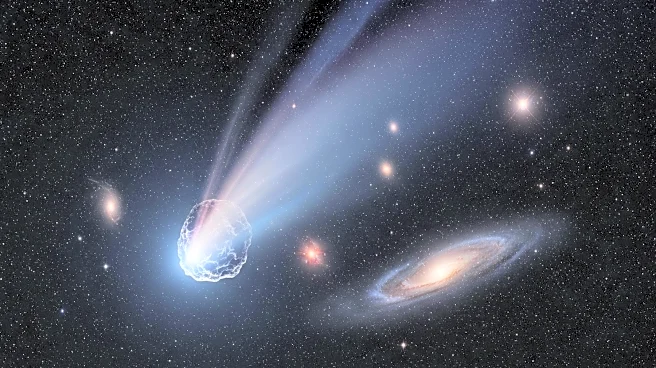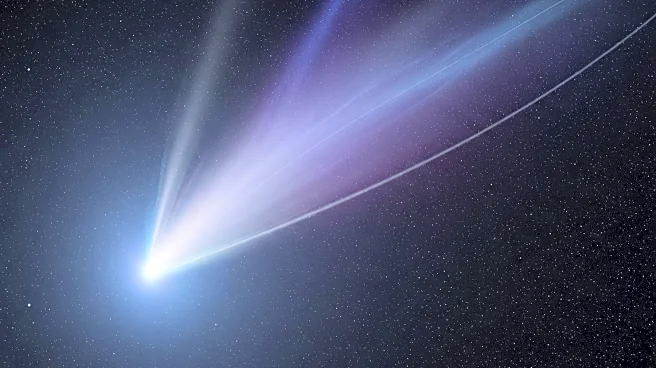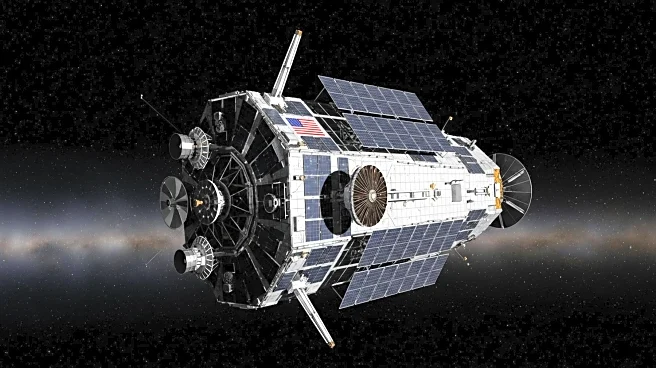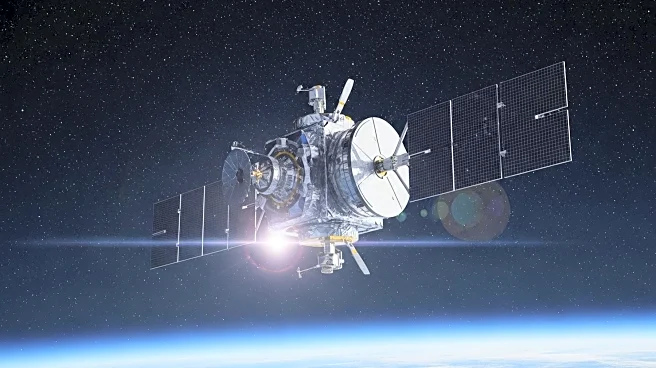What is the story about?
What's Happening?
Astronomers have been closely monitoring an interstellar object named 3I/ATLAS, which has been traveling through the solar system at approximately 137,000 mph. Recently, the Sun emitted a coronal mass ejection, a powerful burst of plasma and magnetic fields, directly at 3I/ATLAS. This event is considered rare and has sparked interest among researchers. The object, believed to be a comet, has shown unusual characteristics, such as a higher ratio of carbon dioxide to water than expected. It is set to pass close to Mars next week, coming within 1.67 million miles. The object's mass is estimated to be over 33 billion tons, significantly larger than previous interstellar objects like 'Oumuamua and 2I/Borisov.
Why It's Important?
The observation of 3I/ATLAS and its interaction with the Sun's coronal mass ejection provides valuable insights into the behavior of interstellar objects and their composition. Understanding these phenomena can enhance knowledge about the solar system's dynamics and the potential impact of such objects on planetary bodies. The object's unusual trajectory and composition raise questions about its origin and nature, with some speculating it could be extraterrestrial technology, although NASA has dismissed this idea. The event highlights the importance of monitoring space objects for potential threats or scientific discoveries.
What's Next?
As 3I/ATLAS approaches Mars, astronomers are keen to observe its behavior and any changes resulting from the recent solar interaction. The close pass by Mars offers an opportunity to gather more data on its composition and trajectory. Researchers will continue to study the object to determine its characteristics and potential impact on the solar system. The findings could influence future space exploration strategies and the monitoring of interstellar objects.
Beyond the Headlines
The interaction between 3I/ATLAS and the Sun's coronal mass ejection may have implications for understanding the resilience and adaptability of interstellar objects. The event could lead to advancements in space weather prediction and the study of cosmic phenomena. Additionally, the object's unexpected characteristics challenge existing theories about interstellar objects, prompting further research into their origins and properties.
AI Generated Content
Do you find this article useful?


